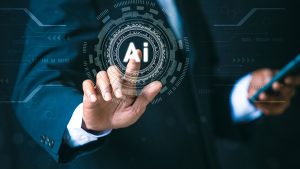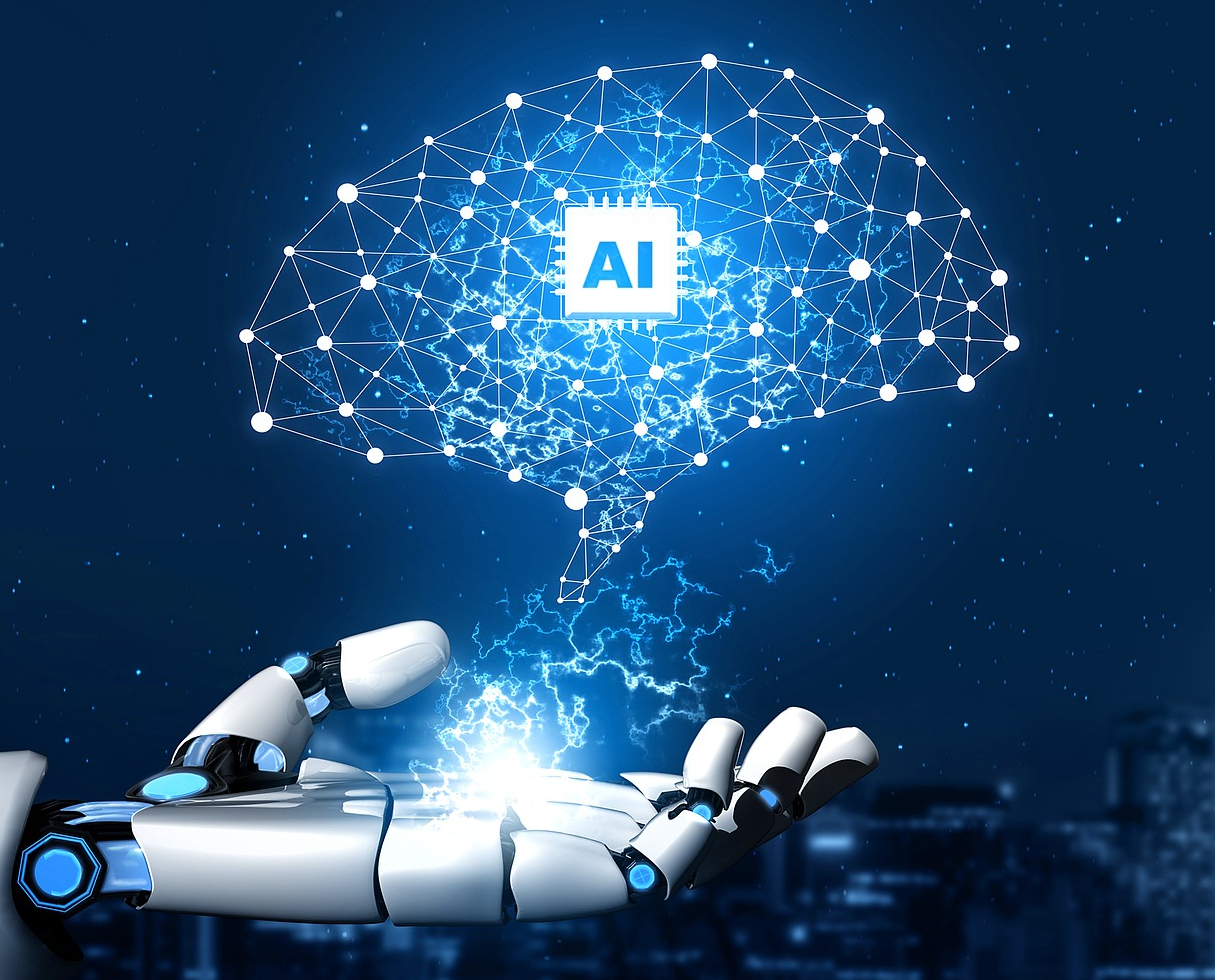AI and Climate Change: A Balancing Act of Innovation and Responsibility
Hi, I’m Fred Wilson, a freelance writer and a passionate advocate for environmental sustainability. I have been following the developments of artificial intelligence (AI) and its applications for climate change for the past few years. In this article, I will share with you some of the insights that I have gained from my research and interviews with experts in the field.
AI is a powerful tool that can help us address the urgent and complex problem of climate change. AI can help us monitor, model, and mitigate the effects of climate change, as well as adapt to its impacts. AI can also help us transition to a low-carbon economy, by optimizing energy efficiency, reducing emissions, and promoting renewable sources.
However, AI is not a silver bullet that can solve all our environmental woes. AI also poses ethical and social challenges that need to be carefully considered and addressed. AI can have unintended and harmful consequences for the environment, such as increasing energy consumption, generating electronic waste, and disrupting natural ecosystems. AI can also create or exacerbate social inequalities, such as displacing workers, widening the digital divide, and infringing on human rights.
Therefore, we need to balance the innovation and responsibility of AI for climate change. We need to ensure that AI is developed and deployed in a way that is aligned with the principles of environmental justice, human dignity, and social welfare. We need to foster collaboration and dialogue among various stakeholders, such as researchers, policymakers, businesses, civil society, and the public. We need to promote transparency and accountability of AI systems, as well as education and awareness of their benefits and risks.
In this article, I will explore some of the examples of how AI can help or harm the environment, and what we can do to ensure that AI is used for good. I will also provide some tips and resources for you to learn more and get involved in this important topic.

How AI Can Help Tackle Climate Change
AI can help us tackle climate change in four main ways: monitoring, modeling, mitigation, and adaptation.
Monitoring
AI can help us monitor the state and changes of the environment, by collecting, processing, and analyzing large amounts of data from various sources, such as satellites, sensors, drones, and social media. AI can help us detect and track the indicators and impacts of climate change, such as greenhouse gas emissions, air quality, deforestation, biodiversity loss, sea level rise, extreme weather events, and human displacement.
For example, Global Forest Watch is an online platform that uses AI to monitor and visualize forest cover and loss around the world, using satellite imagery and other data. Global Forest Watch enables users to access and share timely and reliable information on forests, and to take action to protect them.
Modeling
AI can help us model and predict the causes and effects of climate change, by applying advanced techniques, such as machine learning, deep learning, and neural networks, to simulate and analyze complex and dynamic systems, such as the Earth’s climate, the carbon cycle, and the socio-economic factors. AI can help us improve the accuracy and efficiency of climate models, and to generate new insights and scenarios for planning and decision making.
For example, Climate Change AI is a community of researchers, engineers, entrepreneurs, and activists, who use AI to tackle climate change. Climate Change AI supports and showcases projects that use AI to model and forecast climate change and its impacts, such as Climate TRACE, which uses AI to track and verify global greenhouse gas emissions in real time.
Mitigation
AI can help us mitigate the effects of climate change, by enabling us to reduce our greenhouse gas emissions and enhance our carbon sinks. AI can help us optimize our energy systems, by improving the efficiency, reliability, and integration of renewable energy sources, such as solar, wind, and hydro. AI can also help us reduce our energy demand, by enhancing the performance and intelligence of buildings, vehicles, and appliances. AI can also help us enhance our natural carbon sinks, such as forests, soils, and oceans, by supporting their restoration and conservation.
For example, Google is a leading company that uses AI to improve its energy efficiency and reduce its carbon footprint. Google uses AI to optimize the cooling systems of its data centers, saving up to 40% of energy and reducing emissions. Google also uses AI to increase the share of renewable energy in its electricity grid, by forecasting the supply and demand of solar and wind power.
Adaptation
AI can help us adapt to the impacts of climate change, by enabling us to cope with the changes and challenges that we face, such as food insecurity, water scarcity, health risks, and disaster response. AI can help us improve our resilience and preparedness, by enhancing our early warning systems, risk assessment, and emergency management. AI can also help us improve our adaptation strategies and solutions, by supporting our innovation, creativity, and learning.
For example, IBM is a global leader that uses AI to help communities and organizations adapt to climate change. IBM uses AI to provide weather and climate services, such as The Weather Company, which delivers accurate and personalized weather forecasts and alerts, and GRAF, which is a high-resolution global weather model that can predict weather events up to 12 hours in advance. IBM also uses AI to support disaster response, such as Project OWL, which is a solar-powered device that creates a wireless network for communication and coordination in disaster zones.
How AI Can Harm the Environment
AI can harm the environment in two main ways: direct and indirect.
Direct
AI can have direct negative impacts on the environment, by consuming large amounts of energy and resources, generating electronic waste, and disrupting natural ecosystems. AI can increase the demand for electricity, especially for data centers and cloud computing, which can contribute to greenhouse gas emissions and climate change. AI can also increase the demand for materials, especially for hardware and devices, which can lead to resource depletion, pollution, and waste. AI can also interfere with the natural environment, especially for robotics and drones, which can affect the wildlife and habitats.
For example, OpenAI is a research organization that develops and studies AI, especially for general and superintelligence. OpenAI has created some of the most powerful and impressive AI systems, such as GPT-3, which is a natural language processing model that can generate text on any topic, and DALL-E, which is a computer vision model that can generate images from text. However, these AI systems also require huge amounts of computing power and energy, which can have significant environmental costs and impacts.
Indirect
AI can have indirect negative impacts on the environment, by creating or exacerbating social inequalities, such as displacing workers, widening the digital divide, and infringing on human rights. AI can affect the livelihoods and well-being of people, especially those who are vulnerable and marginalized, by replacing or transforming their jobs, skills, and roles. AI can also affect the access and participation of people, especially those who are disadvantaged and excluded, by creating or reinforcing the gaps and barriers in the digital sphere. AI can also affect the dignity and autonomy of people, especially those who are unaware and unprotected, by collecting or manipulating their data, information, and behavior.
For example, Amazon is a multinational company that uses AI to optimize its business operations and customer services, such as Amazon Web Services, which is a cloud computing platform that offers various AI solutions, and Alexa, which is a virtual assistant that can perform various tasks and functions. However, these AI services also raise ethical and social concerns, such as the working conditions and rights of the employees and contractors who work for or with Amazon, the privacy and security of the customers and users who interact with or rely on Amazon, and the fairness and accountability of the algorithms and systems that power or influence Amazon.

What We Can Do to Ensure AI is Used for Good
We can ensure that AI is used for good in three main ways: regulation, innovation, and education.
Regulation
We can regulate the development and deployment of AI, by establishing and enforcing the laws, rules, and standards that govern the behavior and performance of AI systems and actors. We can ensure that AI is aligned with the values and principles of environmental justice, human dignity, and social welfare, such as sustainability, equity, and democracy. We can also ensure that AI is subject to the oversight and scrutiny of the authorities and institutions that are responsible and accountable for the public interest, such as governments, courts, and watchdogs.
For example, The European Union is a political and economic union that has been at the forefront of regulating AI in the world. The European Union has adopted and implemented various policies and initiatives that aim to ensure that AI is trustworthy, ethical, and human-centric, such as The General Data Protection Regulation (GDPR), which is a law that protects the personal data and privacy of individuals in the digital age, and The Artificial Intelligence Act, which is a proposal that sets the rules and requirements for the development and use of AI in the EU.
Innovation
We can innovate the design and application of AI, by creating and adopting the technologies, methods, and practices that enhance the positive and reduce the negative impacts of AI on the environment and society. We can ensure that AI is developed and deployed in a way that is efficient, effective, and inclusive, such as using less energy and resources, and involving more stakeholders and beneficiaries. We can also ensure that AI is adapted and applied in a way that is relevant, appropriate, and beneficial, such as addressing the specific needs and challenges of different contexts and communities.
For example, Microsoft is a technology company that uses AI to empower and enable people and organizations to achieve more. Microsoft has developed and adopted various technologies, methods, and practices that aim to ensure that AI is responsible, accessible, and inclusive, such as AI for Earth, which is a program that supports and funds projects that use AI to solve environmental issues, such as wildlife conservation, agriculture, and water management, and AI for Accessibility, which is a program that supports and funds projects that use AI to improve the lives of people with disabilities, such as speech recognition, computer vision, and natural language processing.
Education
We can educate ourselves and others about AI, by acquiring and sharing the knowledge, skills, and attitudes that enable us to understand, use, and participate in AI. We can ensure that we are informed and aware of the opportunities and challenges of AI for the environment and society, such as learning about the basics and applications of AI, the benefits and risks of AI, and the rights and responsibilities of AI. We can also ensure that we are engaged and active in the development and governance of AI, such as participating in the discussions and debates, the consultations and feedback, and the advocacy and action.
For example, AI4ALL is a nonprofit organization that educates and inspires the next generation of AI leaders and changemakers. AI4ALL offers various programs and resources that aim to ensure that AI is diverse, inclusive, and equitable, such as AI4ALL Summer Programs, which are immersive and experiential learning opportunities for high school students from underrepresented groups to learn about AI and its social impact, and AI4ALL Open Learning, which is an online platform that provides free and accessible AI education for anyone who wants to learn about AI and its applications for social good.

Conclusion
AI and climate change are two of the most pressing and interconnected issues of our time. AI can help us tackle climate change, but also pose ethical and social challenges. Therefore, we need to balance the innovation and responsibility of AI for climate change. We need to regulate, innovate, and educate ourselves and others about AI, and ensure that AI is used for good.
I hope you enjoyed reading this article and learned something new and useful. If you want to learn more and get involved in this topic, here are some tips and resources that I recommend:
- Read more articles, books, and reports that explore the intersection of AI and climate change, such as AI and Climate Change: How they’re connected, and what we can do about it, The Role of Artificial Intelligence in Achieving the Sustainable Development Goals, and The State of AI Ethics Report.
- Watch more videos, podcasts, and webinars that feature the experts and practitioners of AI and climate change, such as How AI can help us fight climate change: a short guide, AI for Good: Tackling Climate Change, and Climate Change AI Webinars.
- Join more communities, networks, and platforms that connect and support the people and organizations that use AI for climate change, such as Climate Change AI, AI for Good, and Partnership on AI.
Thank you for your attention and interest. I hope you found this article helpful and engaging. Please feel free to share your feedback, questions, or comments with me. I would love to hear from you.




